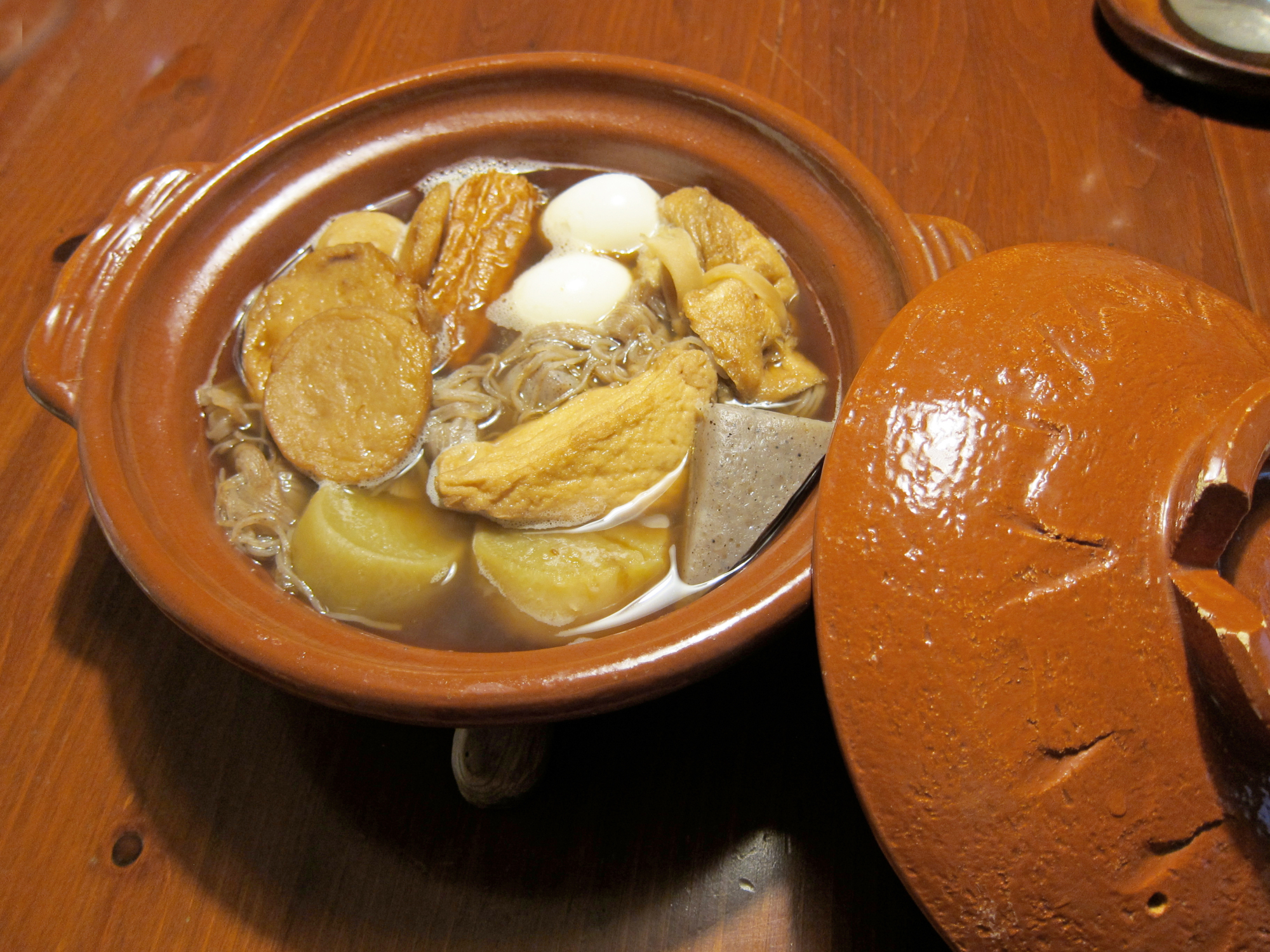The shelves of Japan's convenience stores change with the seasons, but winter brings a particularly unusual addition: stainless steel food warmers installed next to the checkout counter containing oden, a stew of tofu, boiled eggs, daikon, fish cakes and other ingredients simmered in a dashi broth. You may wonder why this rather homey dish — which looks like it belongs on a grandmother's stove — is sold alongside fried chicken, rice balls and sandwiches. Oden is one of the oldest fast foods in Japan, with roots stretching back hundreds of years.
The word "oden" is usually written phonetically in hiragana, but when written with kanji the "den" is the character for "rice field" (the "o" is honorific). The predecessor of oden is miso dengaku, which originally consisted of squares of skewered tofu grilled over charcoal and topped with a miso sauce. The miso-clad white tofu on bamboo skewers was so named because it reminded people of the dengaku, a rice planting and harvest ritual dance where dengaku-hōshi (priests) clad in white hakama (a traditional type of trousers) and colorful coats dance on tall bamboo stilts. Miso dengaku became a beloved snack, especially during the cold winter months as tofu retains its heat when cooked.
In the 18th century, casual eateries in Edo (present-day Tokyo) called nameshi-ya started serving rice mixed with chopped greens and a side of miso dengaku made with tofu or konnyaku (devil's tongue jelly). The same ingredients were later served simmered together in a broth — the forerunner of oden as we know it today. Oden eventually became popular as a quick snack served from roadside stalls, since a pot could be kept simmering indefinitely, with new contents added when necessary.



